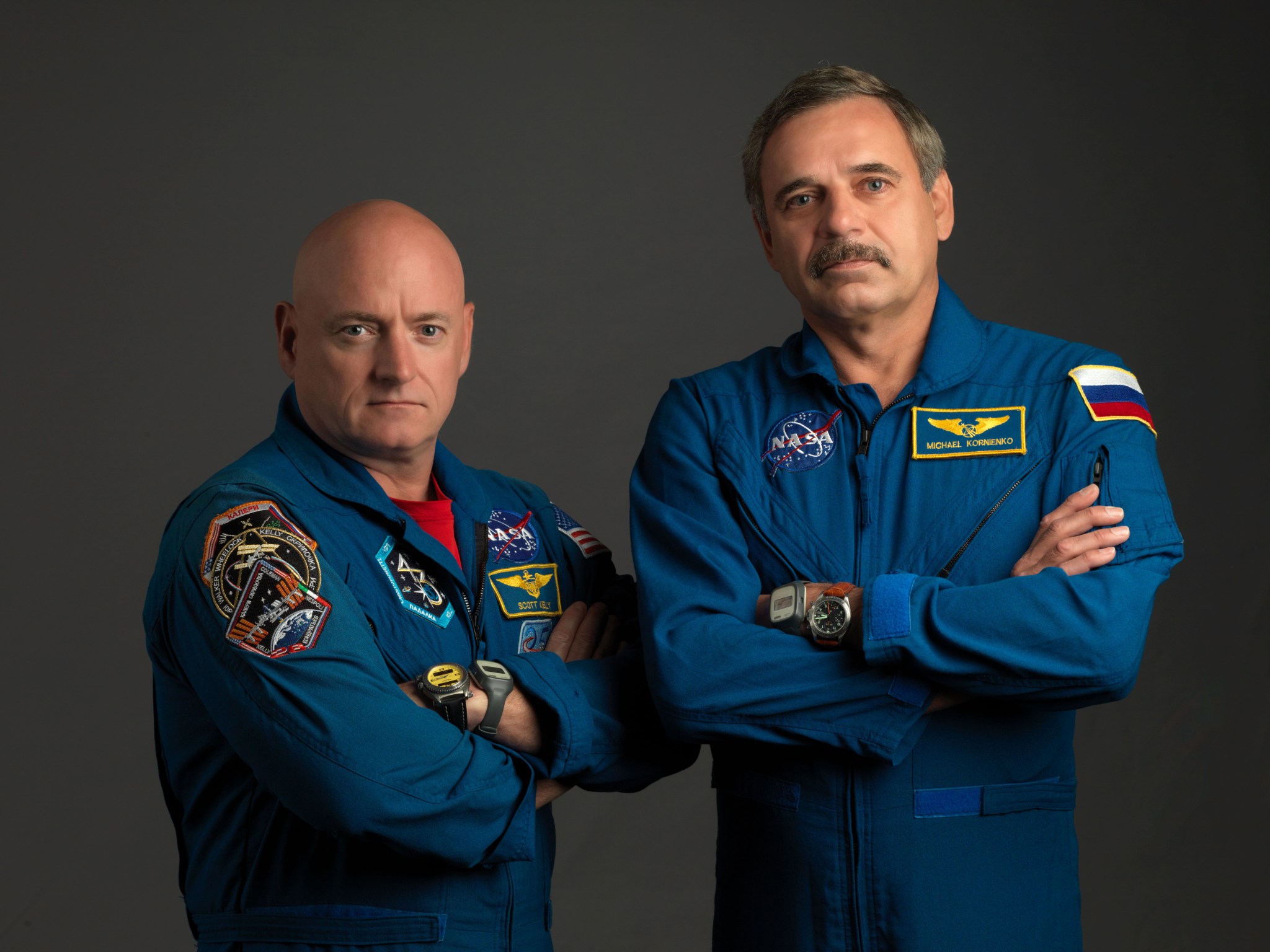Tuesday, Sept. 15, is the midpoint for NASA astronaut Scott Kelly and Russian cosmonaut Mikhail Kornienko of their one-year mission aboard the International Space Station. To mark the occasion, the National Press Club in Washington will host an event from 8:30 to 10 a.m. EDT on Monday, Sept. 14, to discuss the first ever one-year space mission.
Kelly will participate live from the space station. His identical twin, retired NASA astronaut Mark Kelly, and NASA astronaut Terry Virts, who returned in June from his mission aboard the space station, will participate in the conversation from the press club. The televised portion of the event will air on NASA Television and the agency’s website from 9 to 10 a.m. at:
https://www.nasa.gov/nasatv
Media representatives may cover the event in person at the press club, located at 529 14th St NW. More information about the event is available on the National Press Club website at:
http://go.nasa.gov/1ieoXFQ
From midnight to 1 a.m. on Wednesday, Sept. 16, NASA partner Slooh will broadcast live views of the space station as it passes over a network of ground-based telescopes. The program, which also will air on NASA TV and the agency’s website, will include participation by NASA astronaut Cady Coleman and other agency experts who will discuss the future of space exploration. More information about this program is available at:
The average International Space Station expedition lasts four to six months. Research enabled by the one-year mission will help scientists better understand how the human body reacts and adapts to long-duration spaceflight. This knowledge is critical as NASA looks toward human missions deeper into the solar system, including to and from Mars, which could last 500 days or longer. It also carries potential benefits for humans on Earth, from helping patients recover after long periods of bed rest to improved monitoring for people whose bodies are unable to fight infections.
The International Space Station is a convergence of science, technology and human innovation that enables us to demonstrate new technologies and make research breakthroughs not possible on Earth. It has been continuously occupied since November 2000 and, since then, has been visited by more than 200 people and a variety of international and commercial spacecraft. The space station remains the springboard to NASA’s next giant leap in exploration, including future missions to an asteroid and Mars.
More information about the one-year mission is available at:
https://www.nasa.gov/oneyear
-end-
Trent J. Perrotto
Headquarters, Washington
202-358-0321
trent.j.perrotto@nasa.gov
Dan Huot
Johnson Space Center, Houston
281-792-7466
daniel.g.huot@nasa.gov


























